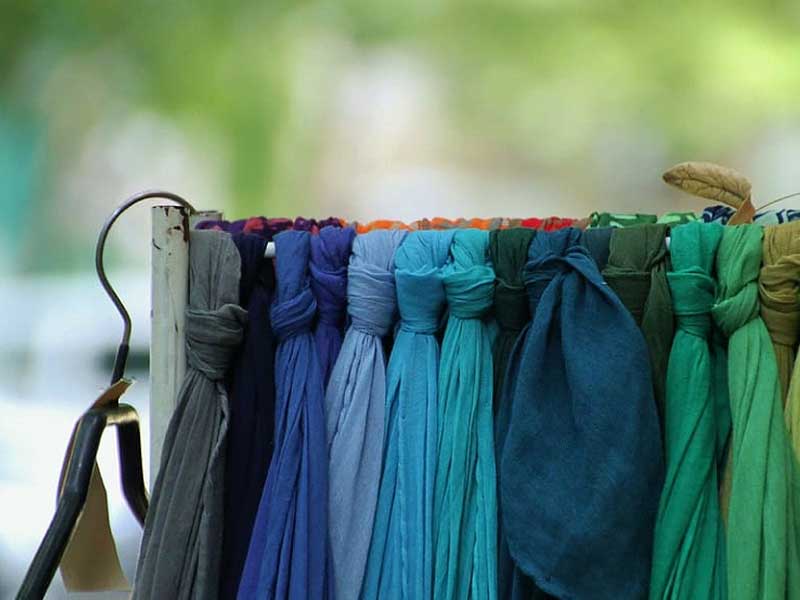
Decoding 2023 and forecasting the future in 2024 and beyond
Implementation of various industry friendly textile policies by several state governments is a move in the right direction, says Dr S K Sundararaman
The global textile and apparel (T&A) market has gone through a roller-coaster ride in the past years, spanning from the COVID-19 years to the Russia- Ukraine war. The market has witnessed some level of volatility in recent years. The contraction of the market that erupted due to the COVID pandemic in 2020-21, recovered to a larger extent in 2021-22. On a regional basis, Europe and the US experienced slow growth throughout the year, while China’s initially strong performance decelerated in the second half. Consumers’ appetite to shop for fashion was diminishing across the board, leading to slowing sales and uneven performance. T&A market is resilient and is expected to take a much better shape in coming years. On the other hand, major buyers are looking to reduce their dependency on China, leading to formulation of China +1 option, combination of the both factors open up an opportunity window for India as well as other nations to capitalise on the emerging market trend.
The textile and apparel industry in India has become a vital contributor to the economy over the years with the industry size reaching a value of approx $ 165 billion in 2022. The industry has been growing over the years despite challenges primarily due to strong fundamentals of domestic demand. While exports have struggled to grow in the past, going forward, there is a huge opportunity for India to increase its export share in the growing global trade. Given the positive outlook in the long term, the Indian textile and apparel market size is projected to grow at a 10 per cent CAGR to reach $ 350 billion by 2030.
The Government has taken proactive measures to support and promote the textile and apparel industry, through scheme like PLI to increase the product basket and increase exports. Mega Integrated Textile Region and Apparel (MITRA), Scheme for Capacity Building in Textile Sector (SAMARTH), National Technical Textile Mission (NTTM), Remission of Duties and Taxes on Exported Products (RoDTEP) etc. Furthermore, the ‘Make in India’ campaign, which emphasises domestic production and aims to transform India into a global manufacturing hub is a growth promoter. These supportive policies collectively demonstrate the Indian government’s commitment to fostering growth and competitiveness. To realise the true potential of the industry and to attain the $ 350 billion market, it is essential to focus on several strategies that can fuel its expansion in both domestic and global market. Given ahead are the key potential strategies to attain 350 billion market (including $ 100 billion exports). FTA’s with major markets, diversify product range, tapping the huge potential of technical textiles, quality assurance, innovation and technology adoption, sustainable practices, digital marketing, market intelligence, brand building, adaptability to market changes etc.
By adopting a holistic approach that combines product innovation, sustainability, market intelligence, and strategic partnerships, India can enhance its competitiveness in the global textile market despite the prevailing uncertainties.
Though Government has taken various initiatives to boost investment in textile and apparel sector in India, the sector has not exploited its full potential. To overcome the obstacles faced by the industry, India’s textile and clothing sector needs to make several modifications and apply some new practices to increase competitiveness. One of the implementations to boost production includes a greater emphasis on technological upgrades and expansion of capacity. The following are the essential prerequisites that are required to stabilise the industry and achieve $ 100 billion export target by 2030;
- Removal of 11per cent import duty on Extra-Long Staple (ELS) cotton
- India annually produces only around 5 lakh bales of ELS cotton as against the requirement of around 20 lakh bales. The demand-supply gap is filled through imports particularly from USA, Egypt, Australia, etc.
- 11 per cent import duty directly adds cost to the products manufactured in the country and makes our products uncompetitive in the international market.
- Address Quality Control Order issues
- Permit import of textile products mandated to comply with QCO without BIS certification under Advance Authorisation Scheme (AAS) (nominated business) and fibres/filaments that are not manufactured by the indigenous manufacturers
- Specific HSN Code for recycled sustainable textile products to be announced
- Address the rising imports of cheaper fabrics and garments from China, Bangladesh, Sri Lanka, etc. by implementing yarn and fabric forward rules to protect the Indian manufacturers
- Zero duty access to textile goods from ASEAN countries (Bangladesh, Vietnam, etc.) coupled with no Rule of Origin position has enabled Chinese manufacturers to dump their finished products at a predatory price affecting Indian manufacturers.
- Clear pending Technology Upgradation Fund Scheme (TUFS) claims by allocating sufficient funds
- Announce Technology Mission on Cotton – II
- Fuel used for generation of electricity to be included within the purview of GST
- Allocate adequate fund for achieving international status for cotton
- Domestic production of ELS cotton needs to be incentivised
- Seeking funds for skill development for spinning, weaving, knitting and processing segments
- Seeking Policy measures for encouraging indigenous textile machinery manufacturing
- Road map and allocation for One Nation One Grid Policy
- Stronger focus on the US market for apparels. The Indian home textile sector was the biggest gainer in volume terms in the US market in the first 10 months of this year. Efforts should be made to repeat the success of Indian apparel.
- Regional Foreign Trade Agreements to be reworked, in line with the current developments, an area which the Central Government is keenly focussed
- A level playing field with our top three competitors in the US market in terms of duty.
- Product diversification and innovation in the MMF (man-made fibre) space and build scale to attract global buyers.
- To focus on technology adoption and digitisation with Industry 4.0 strategies, development of an agile mindset and focus on discipline in credit cycles.
Future outlook
As the industry continues to be challenged by geopolitical and economic headwinds, during 2024 the industry would look to strike a careful balance between managing uncertainty and seizing opportunities. With the uncertain demand for textile products from both domestic and export markets, the onus is on companies to reduce overheads and fixed expenses to the maximum extent possible. Better cost strategies will have to be worked out to ensure efficient production while operating at sub optimal utilisation levels. Surviving, sustaining and reviving during these challenging times through individual and collective actions is the prioritised need of the hour for the industry. The industry is expected to recover in the second half of 2024, but it is important to monitor the situation closely. According to the ITMF’s Global Textile Industry Survey (GTIS), the business situation improved on an average worldwide.
International Textile Manufacturers Federation (ITMF), Zurich, Switzerland, which is representing the entire textile value chain across the world, conducted Global Textile Industry Survey during November 2023. The survey report reveals that weakening demand, inflation, geopolitical issues, raw material price volatility, steep increase in energy charges, shortage of labour and rising interest rates had been the major root causes for the slowdown of the global textile industry.
Despite challenges and uncertainties, the potential for innovation, sustainability and increased competitiveness makes it an exciting time for the industry. By embracing change, fostering innovation and staying customer centric and leveraging government support, India can further consolidate its position as a global textile hub in 2024 and beyond.
Implementation of various industry friendly Textile Policies by several State governments is a move in the right direction. To address the shortage of raw cotton, Cotton Corporation of India has been approached by the industry to adopt MSME supportive Policies.
Disparity in the pricing of domestic and imported MMF, in addition to non-manufacture of specialised fibres to transact nominated export business should be addressed, for the sustenance of the downstream sectors using MMF, which are already struggling due to cheap voluminous imports.
Addressing the GST inverted duty structure affecting the MMF sector gains prominence, since the country requires 20 Billion Kgs of raw material for achieving the target fixed by the government by 2030. Cotton being a natural fibre and its production depending on the vagaries of nature, dependence of MMF is imminent. Further, implementation of Technology Mission on Cotton – II, would go a long way for the growth of the agricultural sector and the textile manufacturing sector.
The working of the government machinery in alignment with the industry demands, with a futuristic approach, is expected to pave way for stability of the domestic industry, in turn, garnering a major share in the international market for Indian textile goods. Thus, the outlook for 2024 is upbeat.
About the author:

Dr S K Sundararaman is a Chairman at The Southern India Mills’ Association (SIMA). He holds an MBBS Degree and Masters in Business Management from Cambridge University, UK. Dr Sundararaman is a well-known personality in the field of technical textiles in India and also in the field of technical education.




